Hotter Than Hell

The heat certainly didn't help in terms of keeping everyone healthy and sane. It was extremely hot during the festival there were few ways to beat the heat. The concrete of the tarmac was radiating with heat from the scorching sun for the next three days, and there was little to no shade available for the attendees.
The original Woodstock had plenty of grass for people to roam but this iteration of the festival had almost none. People were suffering from heat exhaustion and dehydration. And while bottled water was available at the festival, it cost as much as $4 on the first day and by the third day it cost as much as $10, making it too expensive for people to buy, so nobody was getting enough clean water.
Poor Conditions
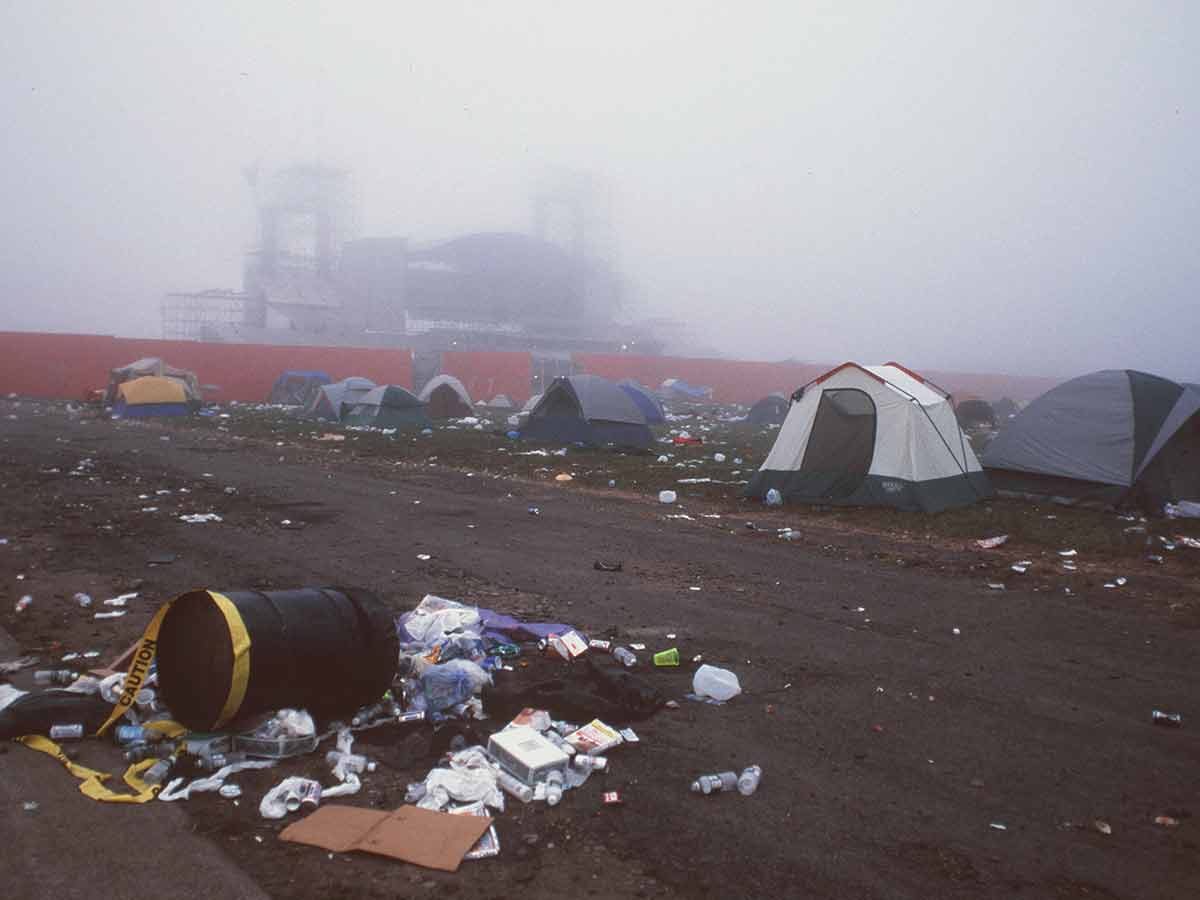
For $150 per person at the event, you would expect better conditions than this. The whole festival looked like a refugee camp, only worse. At least at the refugee camp, there are people around to take care of the refugees. At Woodstock '99, it was every man for himself.
Here you can see tents and trash. If you saw this photo without context, you would think these people were homeless. But, no. These people are at a concert and sleeping in the mud. Nothing about the festival was pleasant, and the only people having fun were so high on illegal substances that they could stop caring for at least a little while.
Day One Estimates

The number of people on the first day of Woodstock '99 was an estimated 250,000. Even on that first day, the crowd was massive. People stood shoulder to shoulder and without an inch to spare. It made crowd-surfing easy, however, but with one major problem: the women surfing the crowds were being assaulted.
A consent to crowd surf is not consenting to be groped or handled in any inappropriate way. But the frat boys in the crowd that, evidently, didn't understand consent would grab the women in every sort of uncomfortable way. Even the women, not crowd-surfing were subjected to assault. And because there were so many people and not enough security, the men were getting away with it.
Trash

The ground proved to be the perfect visual representation of what Woodstock '99 really was. The poor sanitation conditions were brought on by poor waste management. The grounds were littered with trash as far as the eye could see. The smell of everything was horrible, enough so that some people had left because it smelled so bad. Efforts to clean the trash were fruitless as they didn't have nearly enough people working on it.
Should people have been littering? No, but there should have been more available trash cans and people cleaning up. One organizer tried to hand out trash bags during the festival and have guests help clean. One of them responded, "I paid $150 to be here. You should clean it up." And they aren't wrong there. This was a fault of improper waste management and cutting costs for a festival that was just trying to turn a profit while forsaking its guests.
Trash, Everywhere

It isn't possible to overestimate the amount of trash prevalent at this festival. There was trash everywhere and over the course of three days, it would only get worse and worse. By the end of it, the place looked like a garbage dump, as you can see for yourself here.
Hey, it looks like someone lost their shoe. How do you lose your shoe at a concert? And they are never going to find it in all this trash. Waste disposal costs for the event were estimated to be $111,949, which is nothing when considering that the festival is estimated to have raked in $60 million in ticket sales alone. They definitely could have put more money into collecting trash during the festival.
The Water
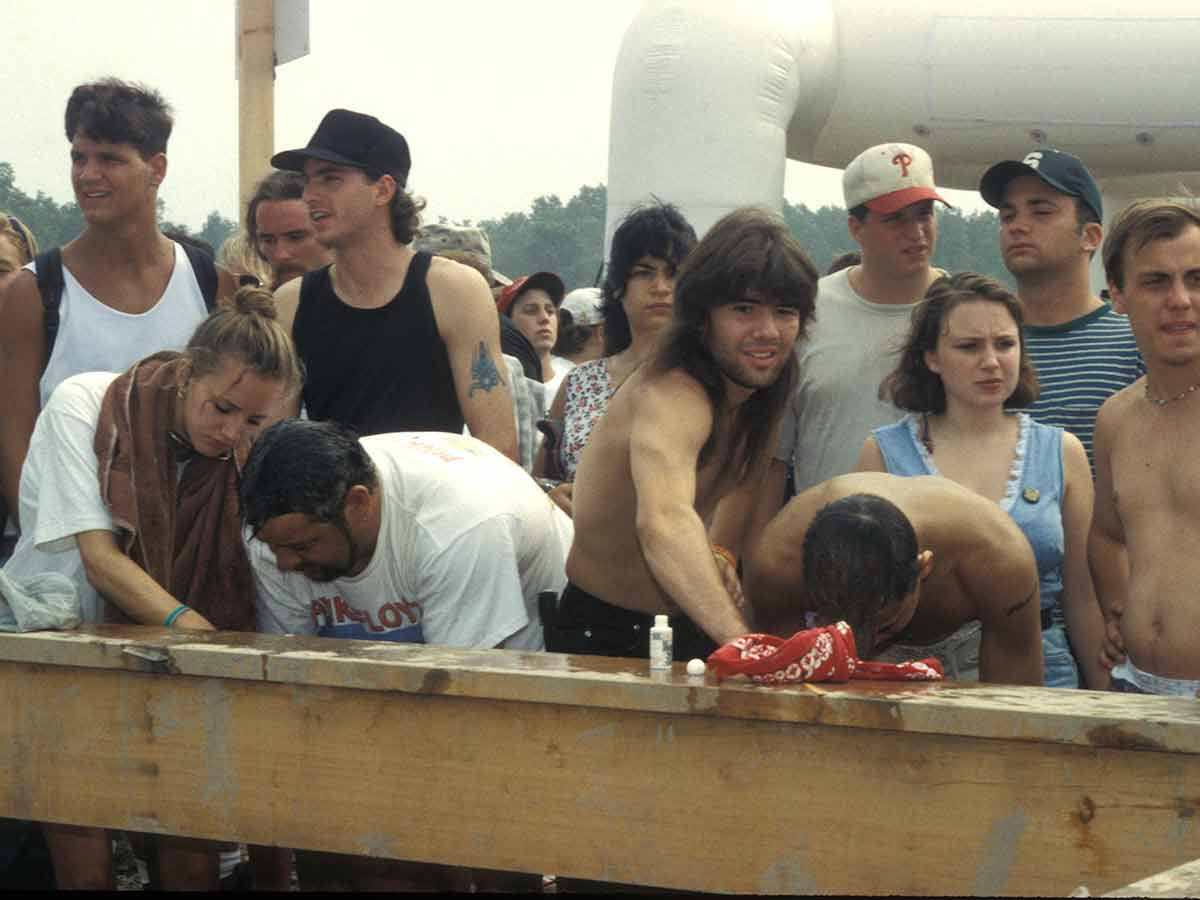
The water available at the music festival was intended for showering, washing hands, and drinking, etc. - all the usual things people need daily. But quickly, the water became unusable and quite unsafe to even be exposed to. However, many people didn't even realize that the water had become infested with fecal matter and bacteria and used what was basically raw sewage
As the toilets became backed up and overflooded, the ground became muddied with feces. After the crowd had broken the shower pipes, people began using the fountains to clean up and that led to fecal matter contaminating the water supply. The water was tested and it was brimming with bacteria, and enough so, that many people ended up getting trench mouth at the festival, a disease that causes bleeding gums and ulcers, among other things.
Finding Shade
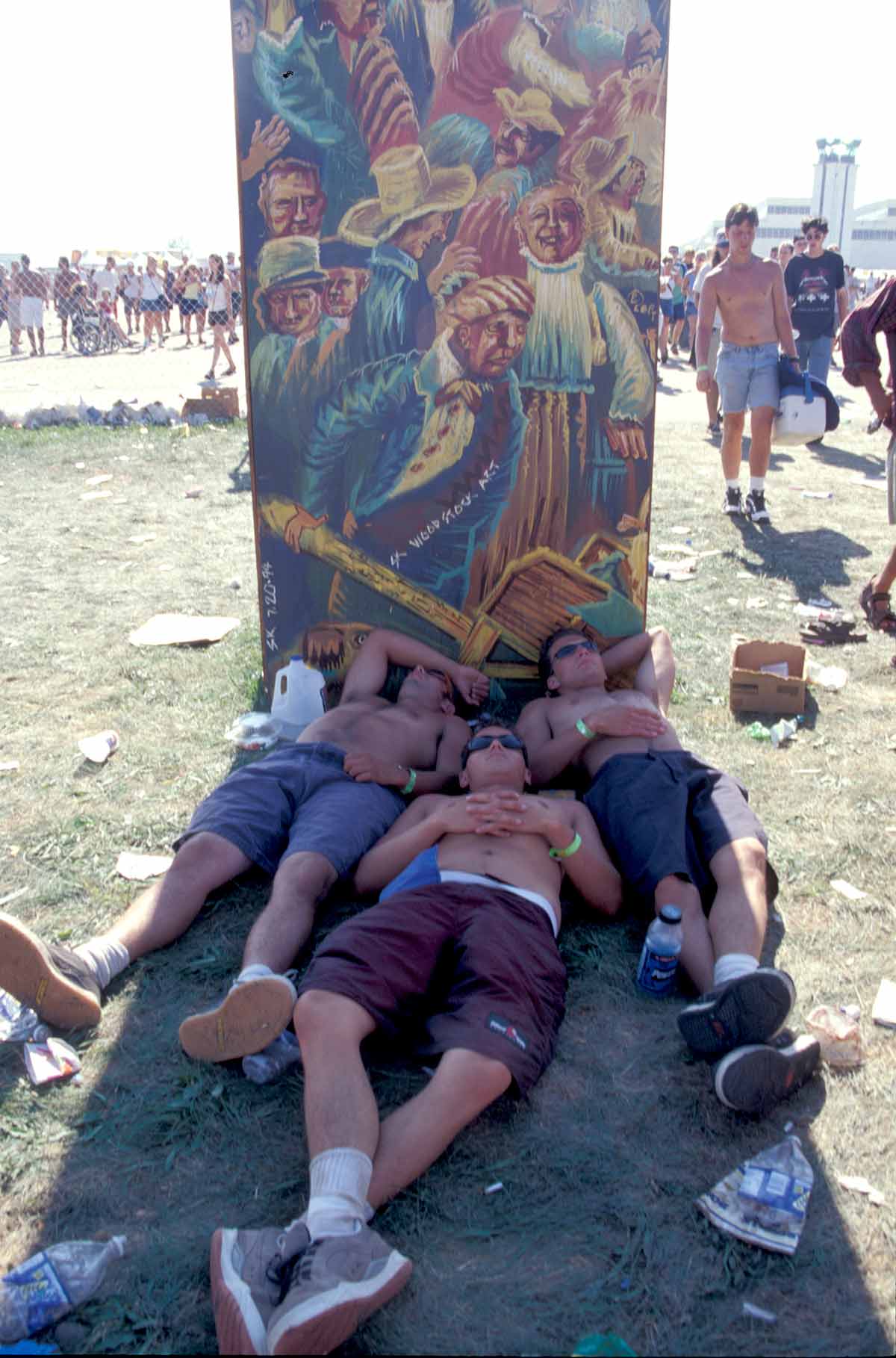
Of what little shade was available, people were taking full advantage. Here you can see people lying in front of a piece of art, trying to find relief from the sun. And as ridiculous as it is to see three men piled on top of each other trying to get some shade, the alternative was much worse.
Aside from the heat just making people crazy, many were needing assistance from the paramedics for heat exhaustion and dehydration. One man even died from hyperthermia after going into a coma due to heat stroke. Sadly, for the three gentlemen in this picture, this was probably the best moment at the festival.
Clothing-Optional
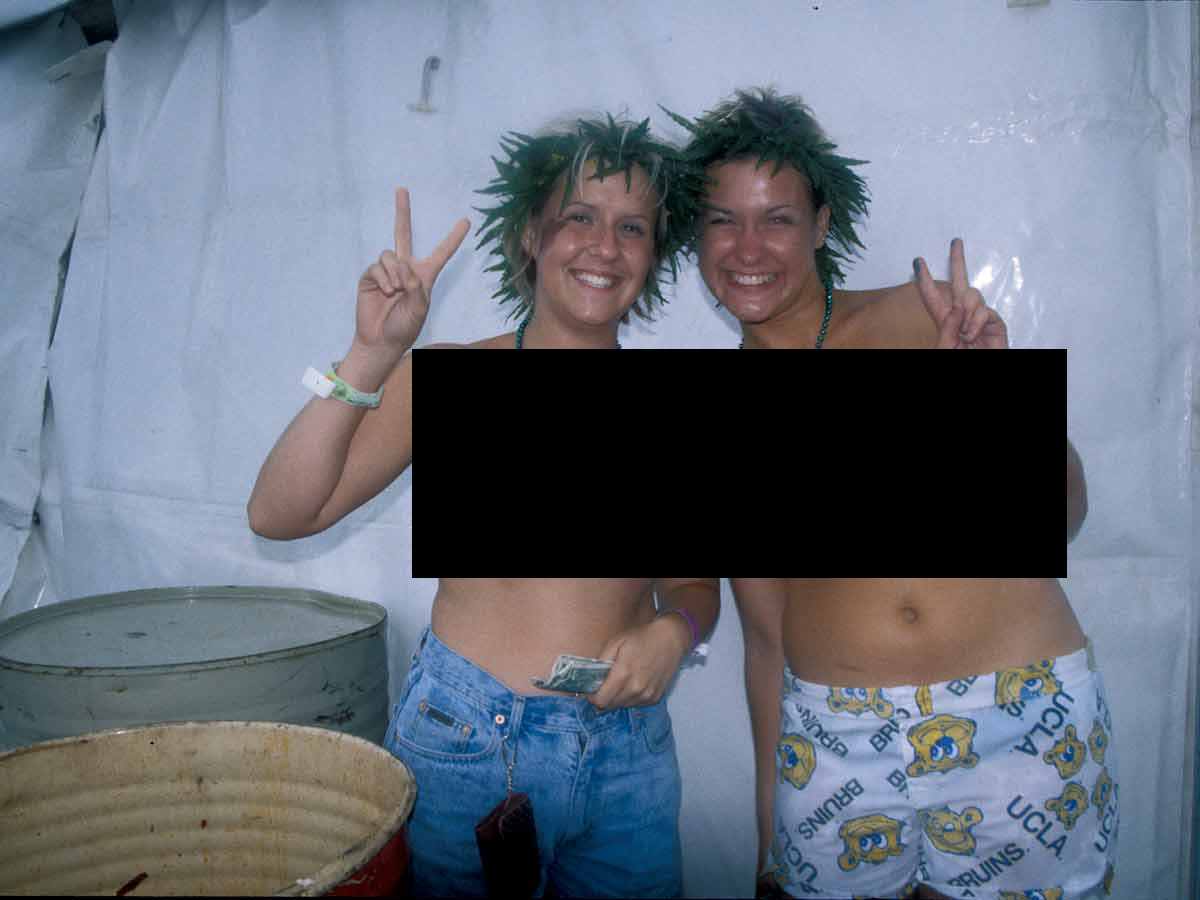
Although not advertised nor encouraged in any shape or form by the festival's organizers, Woodstock '99 ended up being a clothing-optional affair. Although I'm sure the heat had a great deal to do with it, hundreds of people who attended the festival walked around without their tops on because they could get away with it.
We'd even venture to say that these two women here were among the most clothed there. But hyperbole aside, the streaking was rampant, and if you were just about anywhere else, you'd be getting arrested. Even Flea from the Red Hot Chili Peppers performed sans-clothes on stage.
The Lowest of the Low
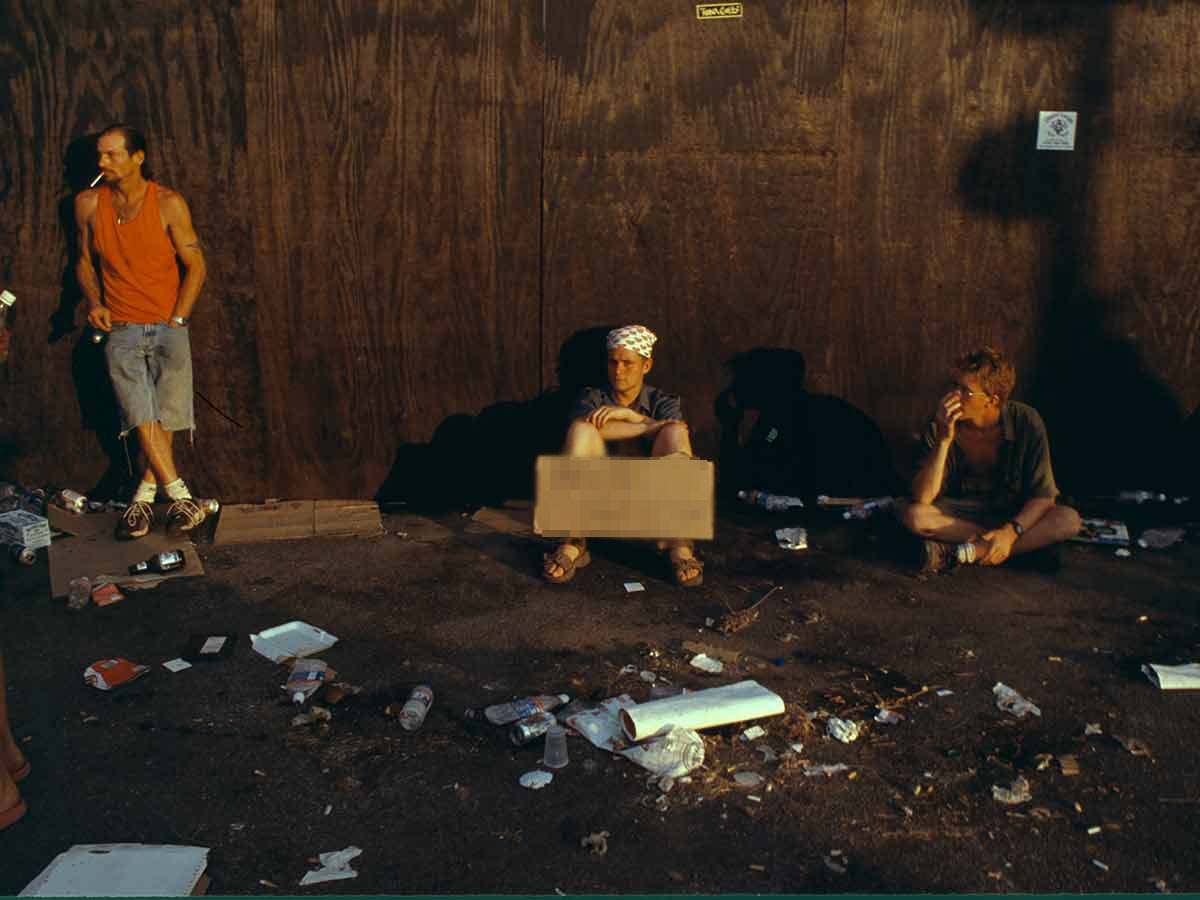
Maybe not everyone, but Woodstock '99 had some of the most despicable and disrespectful young men there that you could possibly imagine. Signs like this "boobs inspector" one and other variations were common among the crowd. They were even disrespectful to the performers themselves, yelling at Sheryl Crowe to "show [her] tits," among other things.
In addition to the sexual harassment and groping, there were instances of full-on sexual assault. Multiple women were raped, including one who was pulled down during the Korn performance and gang-raped. Chock-full of physical injuries and mental trauma, this was not a festival of peace and love like the original Woodstock.
A Call to Arms
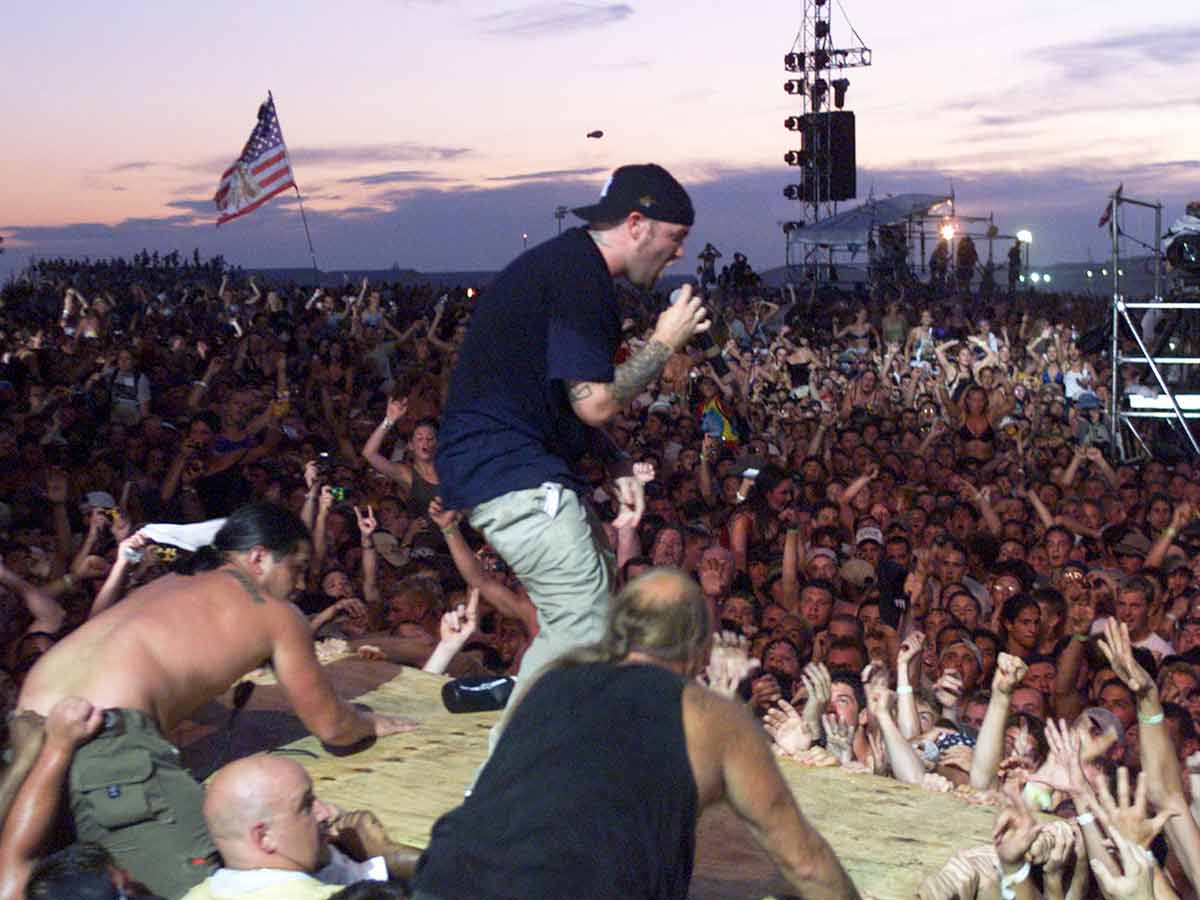
In 1999, when Limp Bizkit's lead singer Fred Durst got on stage to perform for hundreds of thousands of rowdy frat boys who were exhausted by the extreme heat, overcrowding, and lack of supplies, his performance did not fail to add fuel to the fire that was Woodstock '99 - a disaster in every sense.
Before performing his song, "Break Stuff," he called for the crowd to break stuff. Tensions were already high for several reasons, but Limp Bizkit's call for breaking stuff certainly didn't help anything, as rioting, looting and littering like you've never seen in your life would soon follow. And as it did, Fred Durst walked off stage to tell reporters that it was "not [their] fault, but it was phat."
Fiery Finale
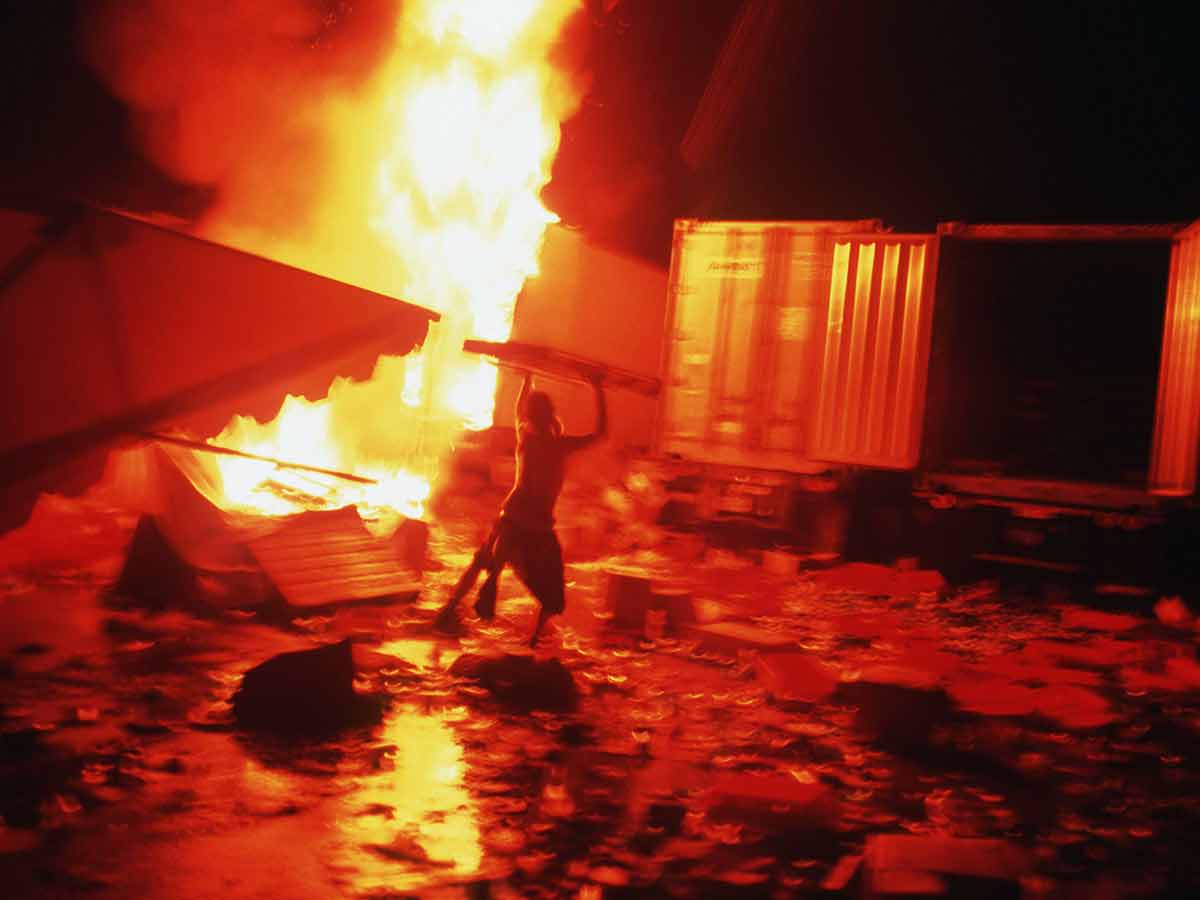
As the festival came to a close, the whole thing went up in flames, literally.
Just after the Red Hot Chili Peppers gave the final live performance of the festival, Jimi Hendrix was displayed on a giant screen playing his song "Fire" and as this occurred, it would be the festival attendees bringing on the real fire. Disappointed at the festival's finale, rioters brought on their own.
Rioters at the festival grabbed just about everything they could as they built large bonfires in the area and danced around them, digging deep into their primal instincts to destroy. And there was nobody there to stop them. From parts of the wall that surrounded the area to cars and trailers, the rioters burned everything they could find.
The Police Arrive
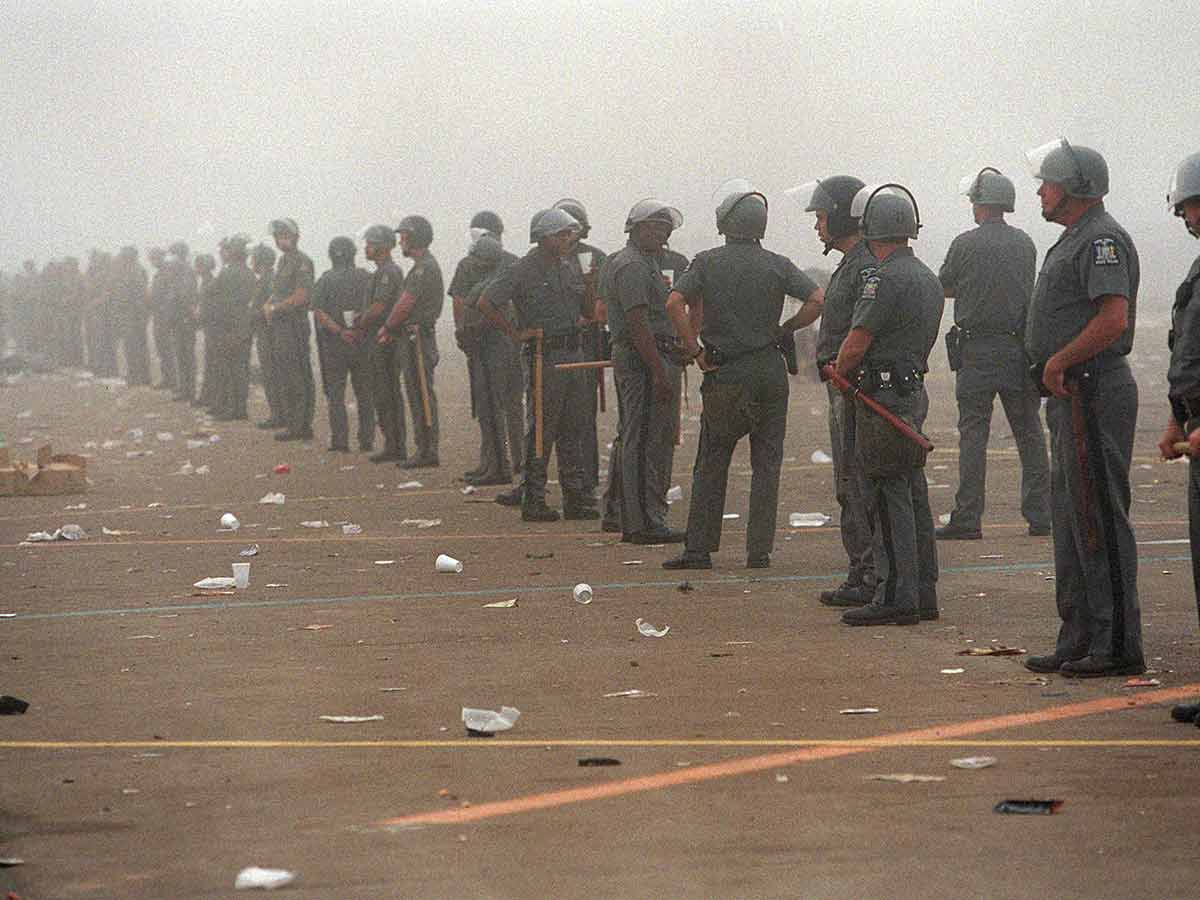
Eventually, the police arrived at the end of day three. It was 11:45pm and a force of several hundred state troopers, local police and other various law enforcement arrived at the scene. Dressed in riot gear, they formed a line in front of the crowd but they were not met with much resistance. The crowd eventually tired out, but allegedly the fires were burning until sunrise.
The police investigated at least four incidents of rape at the event but there were more reported, along with various cases of sexual assault and harassment. A supervisor of two state troopers who was in attendance at the festival riot was suspended for posing with two naked women for a photo.
Aftermath
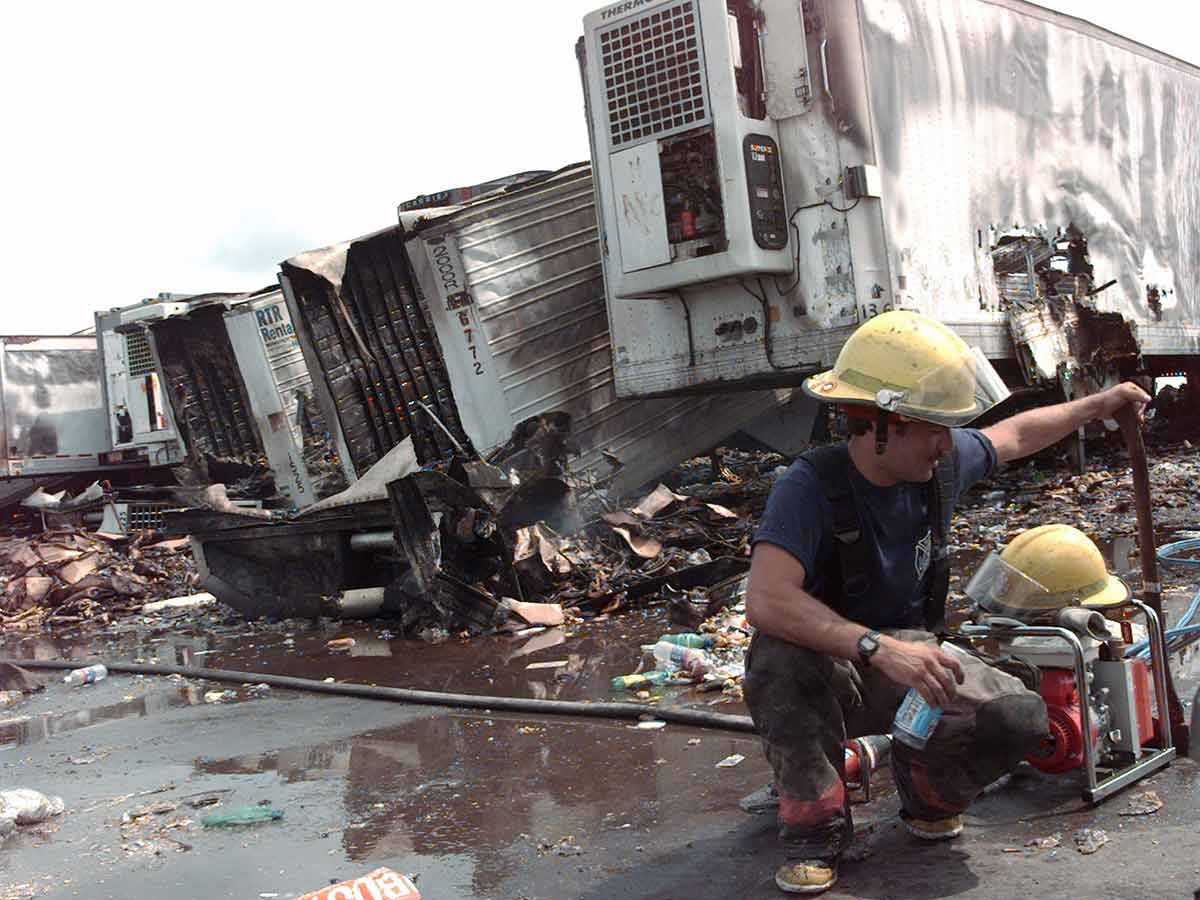
The day after the rioting, it was time for cleanup. No good riot is complete without a super epic cleanup. Okay, so there was nothing epic about this smelly, trash-littered riot of massive proportions. It was a disgusting mess, and somebody had to clean it up. And hopefully, they were paid well.
The remains of the bonfires, the sea of trash, and the bathroom area infested with fecal matter would all have to be cleaned for the area to be even relatively inhabitable again. It was certainly not a place that anyone there would ever want to return to. It looked like a garbage dump and it allegedly took three weeks to clean the site.
The "Leaders"

Back when co-creator of the Woodstock festival, Michael Lang, stood for something, Woodstock '99 was touted as a festival for people, love, and music. But Woodstock '99 was nothing like that. This time it was all about the money. Korn and Limp Bizkit for a peace and love festival? Nah. Bands like those were brought in because they could make Lang money. And the ticket prices were ridiculously high - $150 for the whole event.
The festival leaders were out to make money, partly because they had faced a financial loss at the Woodstock '94 festival - but even then, the ticket prices were high. And as things got worse and worse each day at Woodstock '99, these "leaders" of the festival pretended everything was fine, telling the press that it was just a few bad apples causing trouble. But the reality is that there were many to blame, including the leaders themselves who failed to take care of their guests.
 Author
James Stephens
Last Updated: August 11, 2024
Author
James Stephens
Last Updated: August 11, 2024